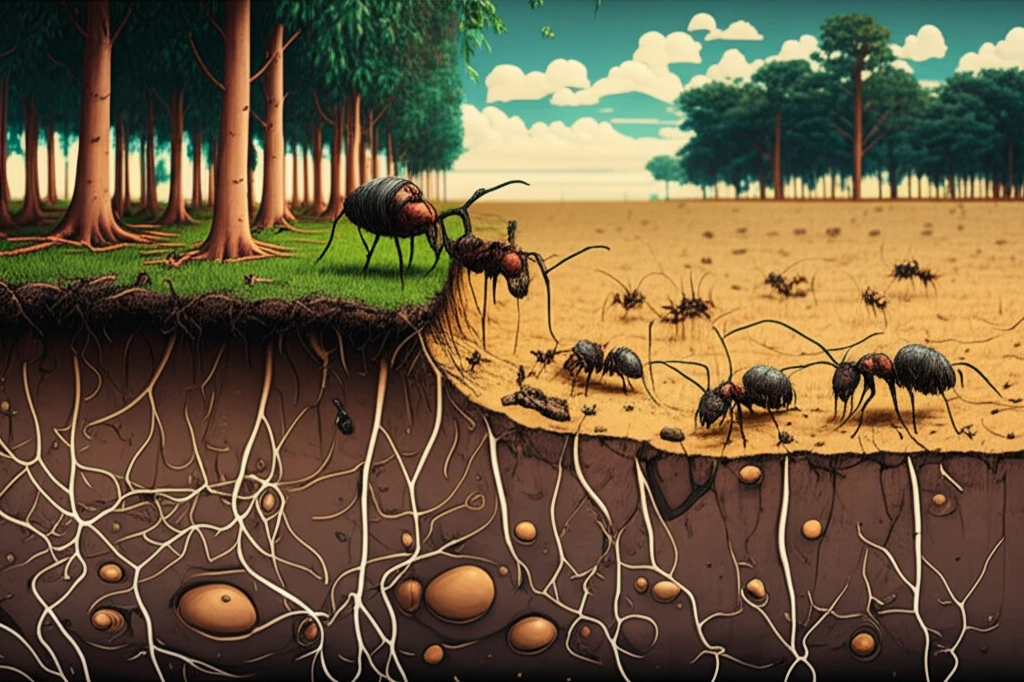
Hidden Worlds Beneath Our Feet: How Land Use Impacts Ant Diversity
"A Deep Dive into Soil Ecology and the Secrets of Ant Communities in Southern Bahia"
The Atlantic Forest, a biodiversity hotspot teeming with unique plant life, faces an ongoing crisis. With only a fraction of its original expanse remaining, the pressure to balance conservation and land use intensifies. In Southern Bahia, Brazil, this challenge is particularly acute, where distinguishing between untouched forests and altered landscapes becomes increasingly difficult.
Over the past few decades, the region has witnessed significant transformations. The once-dominant practice of cattle ranching has given way to the rise of eucalyptus plantations, driven by economic shifts and the decline of traditional pasture systems. This transition sparks a crucial question: how do these different land management strategies impact the intricate ecosystems that thrive beneath the forest floor?
This article dives into a study conducted in Southern Bahia, focusing on the often-overlooked world of ants. As key players in soil ecosystems, ants serve as powerful indicators of environmental health. By comparing ant communities across various land use systems – from untouched primary forests to eucalyptus plantations and cattle pastures – researchers aimed to understand the effects of human activity on ant diversity and inform more sustainable land management practices.
Why Ants Matter: Unveiling Their Role as Environmental Barometers

Ants are not just tiny creatures scurrying across the ground; they are vital components of healthy ecosystems. Their presence, abundance, and diversity reflect the overall well-being of the environment. This makes them invaluable bioindicators – organisms that can signal changes in environmental conditions.
- Ecological Importance: Ants play crucial roles in nutrient cycling, seed dispersal, and soil aeration. Their activities directly impact plant growth and overall soil health.
- Ease of Sampling: Ant communities can be readily sampled using relatively simple and cost-effective methods, such as litter collection and Winkler extraction.
- Abundance and Diversity: Ant communities typically exhibit high species richness and abundance, providing a robust dataset for analysis.
- Sensitivity to Disturbance: Ant communities are highly sensitive to changes in habitat structure, land use practices, and other environmental stressors.
- Rapid Response: Ant communities often respond quickly to environmental changes, making them useful for detecting early signs of disturbance.
The Future of Land Management: Balancing Conservation and Development
The study underscores the importance of considering the impact of land use practices on biodiversity. While eucalyptus plantations may offer a better alternative to cattle pastures in terms of ant conservation, prioritizing the preservation of native forests and promoting sustainable agroforestry practices is crucial for safeguarding the long-term health of ecosystems. Further research is needed to explore the complex interactions between land use, ant communities, and other aspects of biodiversity to inform effective conservation strategies and promote a more sustainable future for the Atlantic Forest.
